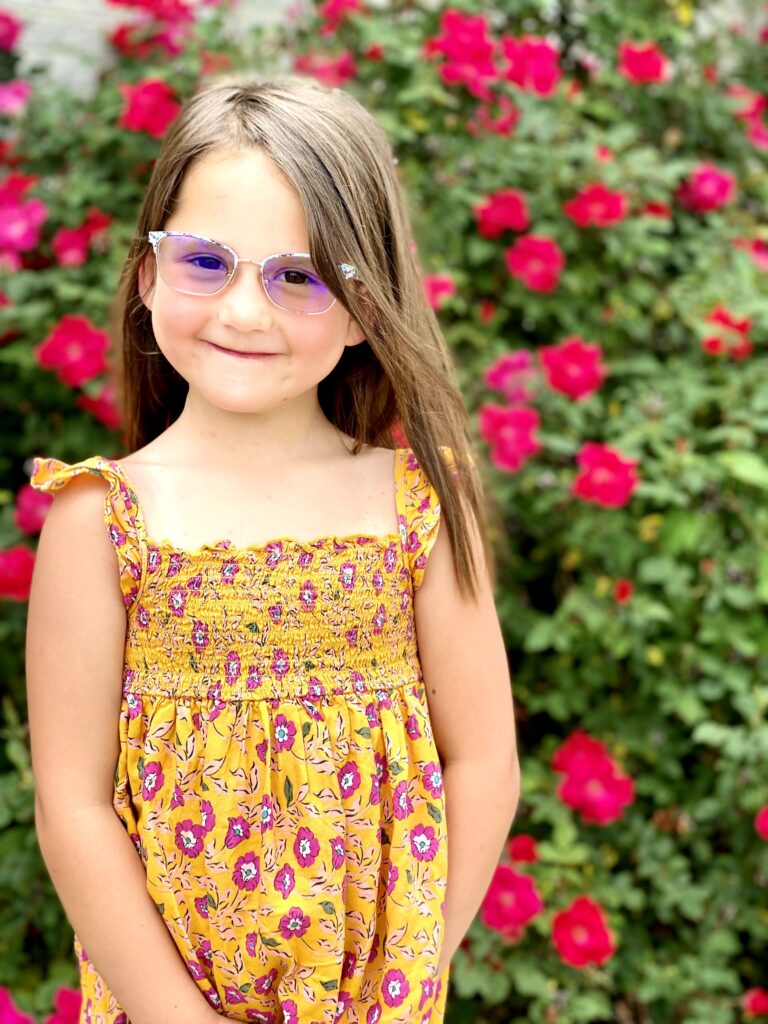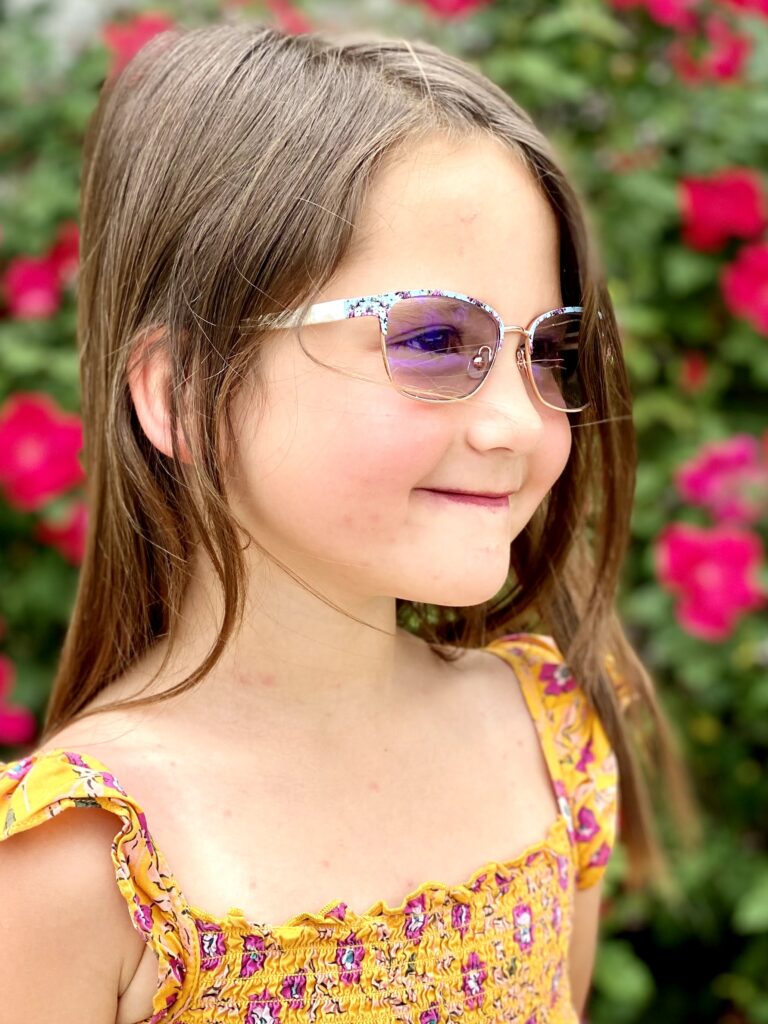Misight® Lenses: Myopia Management for Kids

Wearing contact lenses involves careful consideration, especially when it comes to children.
Parents are often unsure of whether or not their children are ready for contacts and can be nervous about the risk of infection that comes with contact lenses. However, clinical studies have found that with proper care, children have the same risk of infection as adults. Since the risk is minimal, teaching children to wear contact lenses while they are young can have significant long-term benefits.
Nearsighted children have a lot to gain from wearing lenses designed to slow their myopia progression.
Myopia is an eye disorder that causes the axial length of the eye to stretch and lengthen. When this occurs, light falls in front of the retina, rather than on it. As a result, far-away images and objects appear blurred.
Myopia progression usually begins in childhood and continues through to the early teens. The progression, however, can continue into adulthood.
Glasses are prescribed to correct myopic vision, but they do nothing to prevent it from worsening.
Since myopia is common, it can be easy to overlook the long-term dangers that it brings.
With aggressive myopia, the elongation of the eye results in a high prescription. High prescriptions are significantly linked to irreversible vision loss. The risks of glaucoma, myopic maculopathy, cataracts, and retinal detachment, are all increased by myopia.
Myopia is a growing problem
According to a recent study, around 42% of children in the U.S. ages 5-19 suffer from myopia.
In 1970 only 25% of Americans suffered from myopia.
Today, 40% of the population is myopic.
Further studies suggest that by 2050 the percentage will increase to 58%!

Many factors contribute to the development of myopia.
When it comes to developing myopia, genetics play a role but are not the only contributing factor.
Studies show that if both parents suffer from myopia, their child has a 50% likelihood of inheriting the condition. If only one parent suffers from myopia the likelihood decreases to 33%.
However, if neither parent suffers from myopia, children still have a 25% chance (1 in 4) of becoming myopic.
Studies also suggest that too much time on digital devices and not enough time outdoors may be to blame.
Most of our lives are spent focusing on things that are only an arm’s length away. The human eye wasn’t designed for that kind of lifestyle.
Focusing on images up close for too long causes the eye muscles to work harder than they are meant to. When the eye is working hard to focus, it causes strain and discomfort. Taking a break and looking at objects at a distance, allows the eyes to relax.
Playing outside is key in allowing children’s eyes to relax from time spent over-focusing.
Reducing screen time is essential to your child’s long-term eye health.
It’s recommended that children wear sunglasses and get at least 2-3 hours of daily play outside to aid their eye development. Ensuring they are playing outdoors with proper sunglasses, will protect their future vision.
While myopia occurs naturally, its progression is manageable and can even be stopped.

Traditionally, myopia has been treated as a refractive disorder. Meaning that corrective lenses are prescribed to correct vision, but little more can be done.
A few treatments for aggressive myopia progression have been in existence, however, up until recently, these treatment methods have been uncomfortable and challenging.
Some treatments have included wearing gas-permeable contact lenses to reshape the cornea of the eye or applying eye drops that would prevent the pupil from dilating.
While these methods are not ineffective, they’re not practical for those who need myopia management the most – young children in the age range of 8-12.
Since prior treatments have been uncomfortable for children, finding a better solution has been the focus of new research.

Myopic patients have two problems that need to be addressed: vision correction and myopia management
Until now, there hasn’t been a solution for comfortably correcting vision while also managing myopia. The treatments mentioned above do nothing to correct vision. Their goal is simply myopia management.
Because myopia progression can be aggressive, myopic patients can see frequent prescription changes. Sometimes these changes occur within 3-6 months from their initial eye exam. Costly treatments and frequent prescription changes add up over time and can be quite a burden on myopic patients and their families.
 A two-fold solution is finally here
A two-fold solution is finally here
Cooper Vision®, a contact lens manufacturer, has spent the past several years creating a solution. Their goal was two-fold: to comfortably correct vision, while controlling myopia progression.
After years of development and clinical trials, the solution is their Misight® lens. A daily disposable contact lens that corrects vision while managing myopia.
Misight® lenses are soft and easy to care for. They’re easy for children to handle and wear comfortably. Since they are a daily lens, there’s little upkeep. Wearers put the lenses in at the beginning of the day and discard them in the evening. This creates a lower risk of infection when worn as directed.
Misight® lenses successfully correct vision while slowing the progression of myopia.
The Cooper Vision® team conducted a clinical trial that took place over several years. The results showed that treatment with their lenses was effective in slowing myopia progression in up to 59% of wearers. The lenses correct the wearer’s vision and also contain “treatment” zones that redirect light to the front of the retina. The redirection of light effectively slows the elongation of the wearer’s eyes, slowing the progression of myopia!

If your child is in the age range of 8-12 and suffers from myopia, ask their doctor if they should try Misight® lenses.
If your child is a candidate, we’ll teach them how to wear and care for their new lenses and also provide them with a trial supply.
After wearing the lenses for a week, they’ll follow up with their doctor to discuss the lenses again. The doctor will assess the health of your child’s eyes and how they are responding to the contact lenses.
If you, your child, and the doctor decide to move forward, we’ll enroll your child in the Brilliant Futures™ Myopia Management Program. For effective results, your child will wear the lenses for 10 hours a day, 6 days a week, and have a brief follow-up appointment with their eye doctor every 6 months to assess their myopia progression.
Myopia is a common and progressive eye disorder, but it IS manageable
Routine eye exams are the best way to evaluate the health of your eyes. While many eye disorders such as myopia are common, they should always be monitored for changes.
Scheduling a yearly eye exam is the best way to watch for changes in eye health.
Be sure to invest in your sight and schedule with us today!



